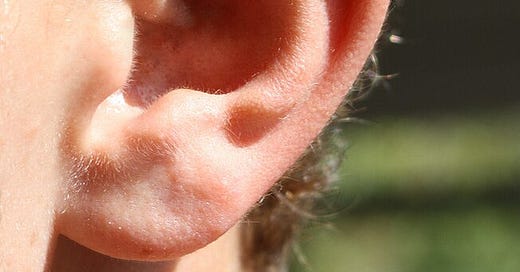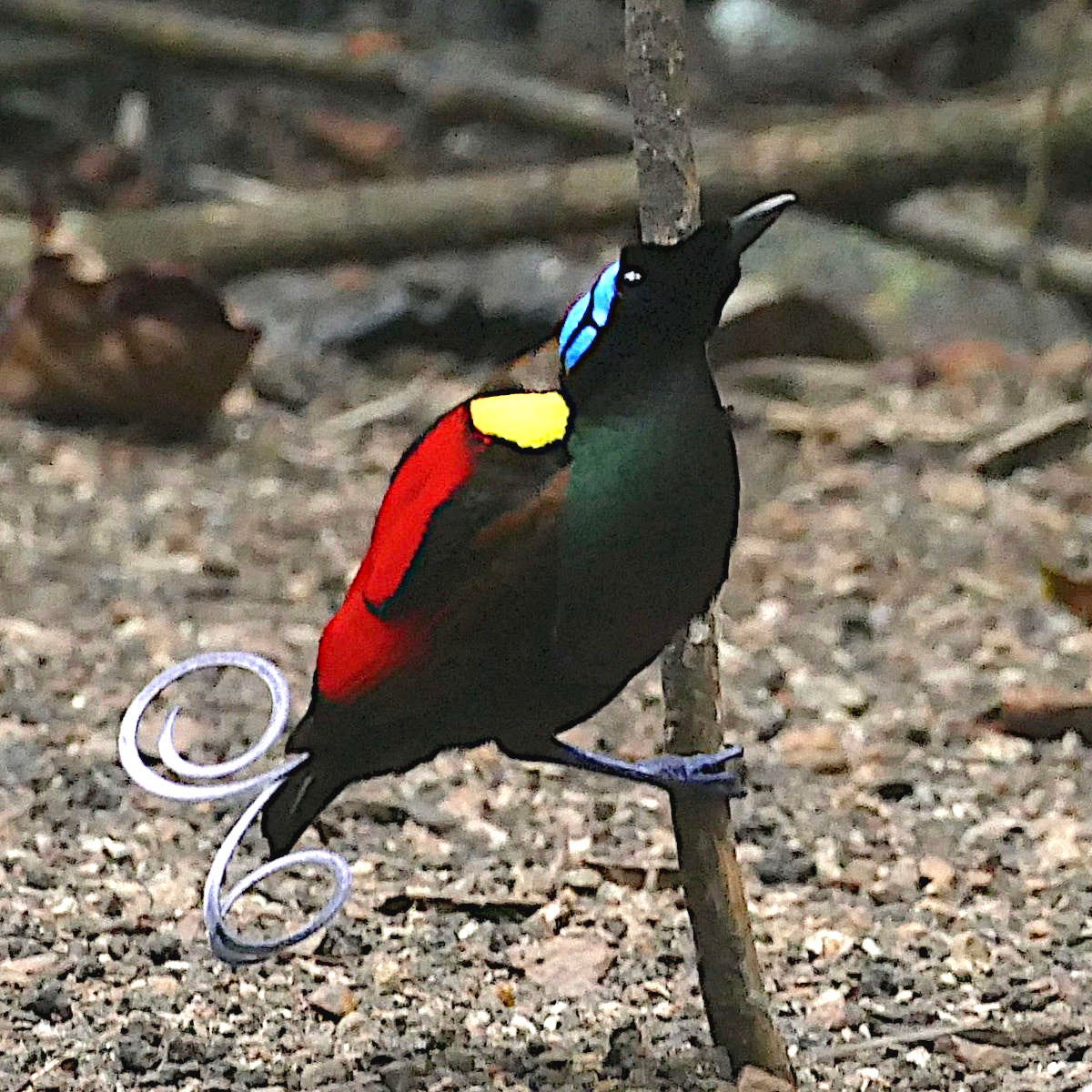The podcast will be back next week (or maybe the week after, because I’m a bit sick at the moment so recording will be delayed until I sound less grotty), but in the meantime …
Bit of a ‘Things that make you go: “Huh. That’s interesting,”’ focus for this little selection of news snippets. Science is constantly turning up weird little surprises from the world of animals - even relating to stuff you’d maybe assume we’ve already figured out.
As usual for these posts, bit of content for everyone, then a bit more for paying subscribers after the break. Glowing birds-of-paradise, the surprisingly sensitive legs of spiders and tails of rays, and - because we’re animals too - starting with a fun little detail about what happens when a human tries to listen to something …
1. Your body remembers how your ears used to work.
Put hundreds of thousands of ‘great-’s in front of the words grandmother/grandfather and my and your ancestors were apes (I mean, we still are apes, really, but you know what I mean). Stick a load more on the front and they were early primates, maybe even something a bit like a treeshrew.
Point is, we (obviously) have a direct line of descent that connects us back to animals living radically different lives, having radically different forms and behaviour. And some of all that difference is still embedded, memorialized, in us, even if we’re entirely unaware of it.
Which brings me to a recent research paper with the not even very self-explanatory title: Electromyographic correlates of effortful listening in the vestigial auriculomotor system.
Fortunately for us, however, the bottom line is relatively simple and straightforward - and, I think, kind of fun.
This is about ‘effortful’ listening: people concentrating, focusing on trying to actively listen to, or for, a sound. What these researchers documented is that when a human being does that, there’s nerve activity and muscle activation that seems to be a multi-million year relic of our animal past.
Very roughly, it’s thought that around 25 million years ago the human evolutionary lineage lost an ability that most other mammals still have: the ability to move their ears. To reorient them to focus on, locate and identify the directional source of a sound. We have not been able to do that - not in any significant way - for a very, very long time.
But, it turns out, our nervous and muscle system kind of ‘remembers’ that we once could. Muscles that once would have moved our ears, but no longer do, activate when we try to pick out a particular sound - and they do it in ways that almost suggest they’re ‘trying’ to move our ears to focus on that sound.
Nice to have that faint echo of our evolutionary past still with us, I think, and kind of incredible it’s persisted for so many millions of years despite not actually ‘working’ in a physical sense.
2. Birds-of-Paradise are bioflourescent.
Everyone’s familiar with the wildly elaborate plumage and display behaviour of the bids-of-paradise, I’m sure. Technically, they’re the family Paradisaeidae - 45 pretty closely related species.
(That’s Wilson’s bird-of-paradise in the picture, btw).
Well, it turns out that 37 of the those 45 species of bird-of-paradise are not only colourful, they’re bioflourescent. Bioflourescence is when an organism absorbs certain incoming wavelengths of light and re-emits it on a different wavelength. i.e. bioflourescent animals ‘glow’, especially but not only under UV light. (A completely different thing from bioluminescence, just to be clear, even though that’s also sort of about glowy animals).
(if you want to get a bit more technical, what usually happens in bioflourescence is that blue/ultraviolet light is absorbed and re-emitted as visible colours like green, red, yellow or whatever. There’s probably a podcast episode in this somewhere, because it’s only pretty recently that scientists have started to realize that far, far more animals are flourescent than we ever imagined).
Anyway, scientists found that almost all birds-of-paradise have skin/plumage that can perform this bioflourescent trick. Not over their whole bodies, but in those parts of the body that are particularly used in courtship or competition displays. These key bits of their anatomy - which vary a bit from species to species - are effectively radiating transformed light. Colours. Highlighting the bits of the body the displaying bird wants a potential mate, or a potential rival, to pay attention to.
Nice, short and accessible, discussion of the discoveries here: Widespread biofluorescence in birds-of-paradise suggests enhanced signaling for hierarchy and courtship displays.
And over to the paying subscribers for a couple more kind of whacky news snippets, about the tails of rays and the legs of spiders …





